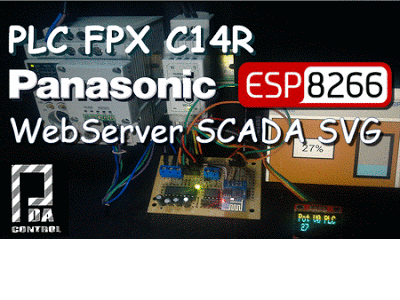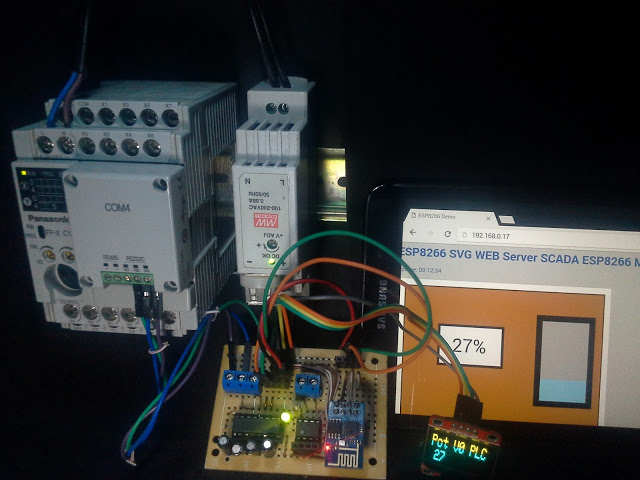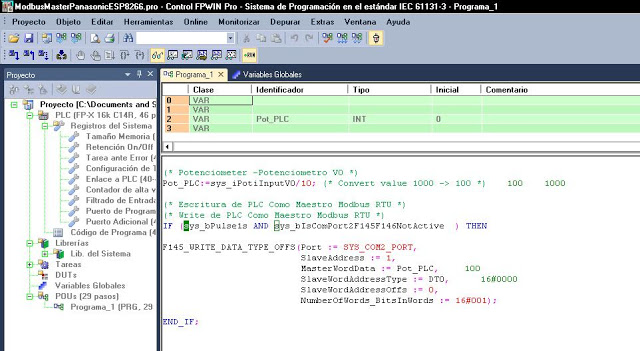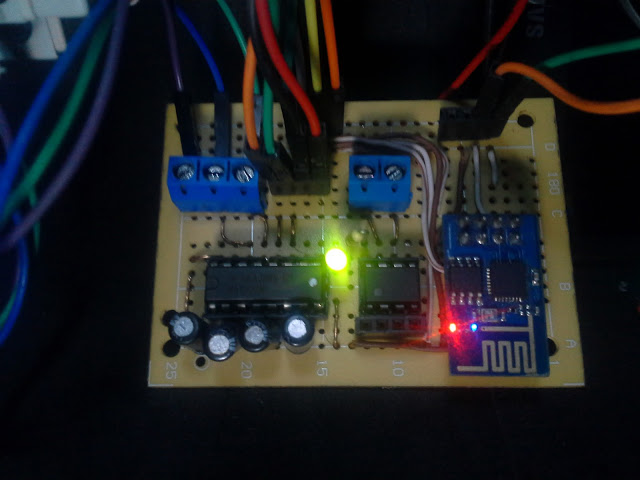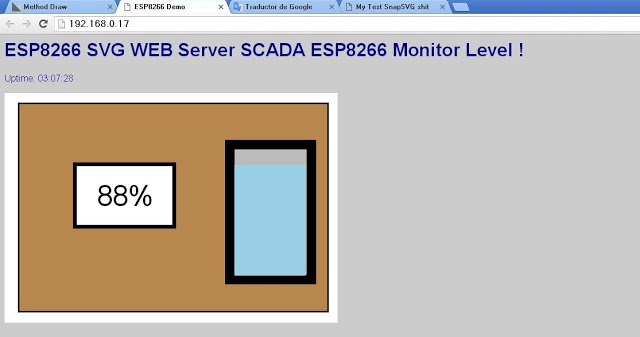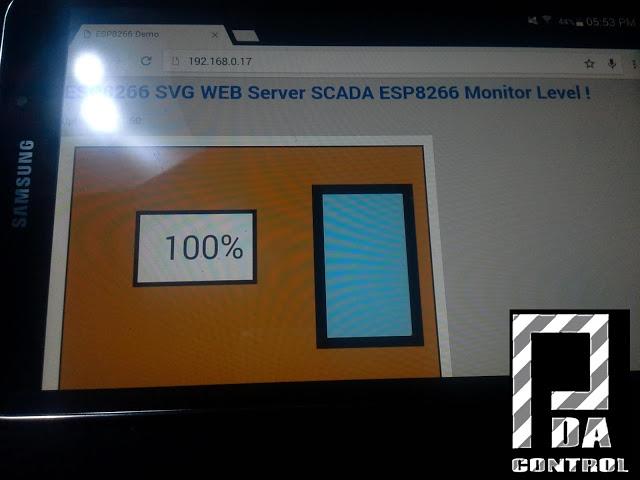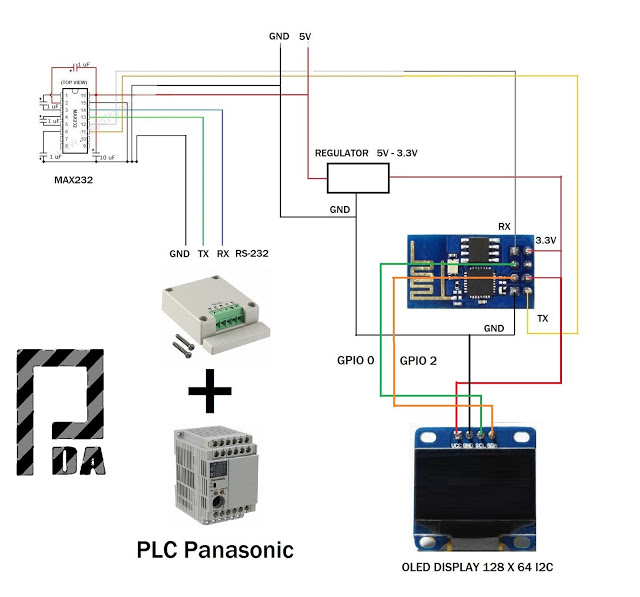Taking up and improving the applicability of this project integration Scada Web-based SVG ESP8266, it has decided to communicate the ESP8266 with a PLC (Programmable Logic Controller) Brand Panasonic FPX C14R, atravez protocol Modbus RTU Serial RS232, Being the PLC Panasonic Master Modbus RTU and Modbus RTU slave ESP8266.
It has an integrated OLED display 128 x 64 communicated via I2C with the ESP8266 for visualization features of the modbus PLC registers.
General objective of the Project
1 ESP8266-01 module with Max232 will connect to the serial port RS232 PLC Panasonic.
2 Integrating Modbus master is routine in the PLC Panasonic with previously programmed strategy in Control FPWIN His Panasonic -Pro software, it is planned to create a monitoring solution Concerning Industrial Controllers values is PLC, PAC, HMI or OPC.
Project Specific Objective
the value of potentiometer V0 PLC Panasonic in a range of 0-1000 escalizado in ESP8266 from 0 to 100% was displayed, the value in a Mini scada webserver based on SVG is visualized, the variation of the potentiometer is noticed almost instantly, for communication between the PLC and ESP8266 is via RS232 Modbus RTU.
(* Potenciometer -Potenciometro V0 *) Pot_PLC:=sys_iPotiInputV0/10; (* Convert value 1000 -> 100 *) (* Escritura de PLC Como Maestro Modbus RTU *) (* Write de PLC Como Maestro Modbus RTU *) IF (sys_bPulse1s AND sys_bIsComPort2F145F146NotActive ) THEN F145_WRITE_DATA_TYPE_OFFS(Port := SYS_COM2_PORT, SlaveAddress := 1, MasterWordData := Pot_PLC, SlaveWordAddressType := DT0, SlaveWordAddressOffs := 0, NumberOfWords_BitsInWords := 16#001); END_IF;
Has made the connection module for 3.3V TTL serial part to a MAX232 (TTL to RS232 converter) for voltage levels between the communication ports are the same, the module must not exceed feed this voltage 3.3v .
